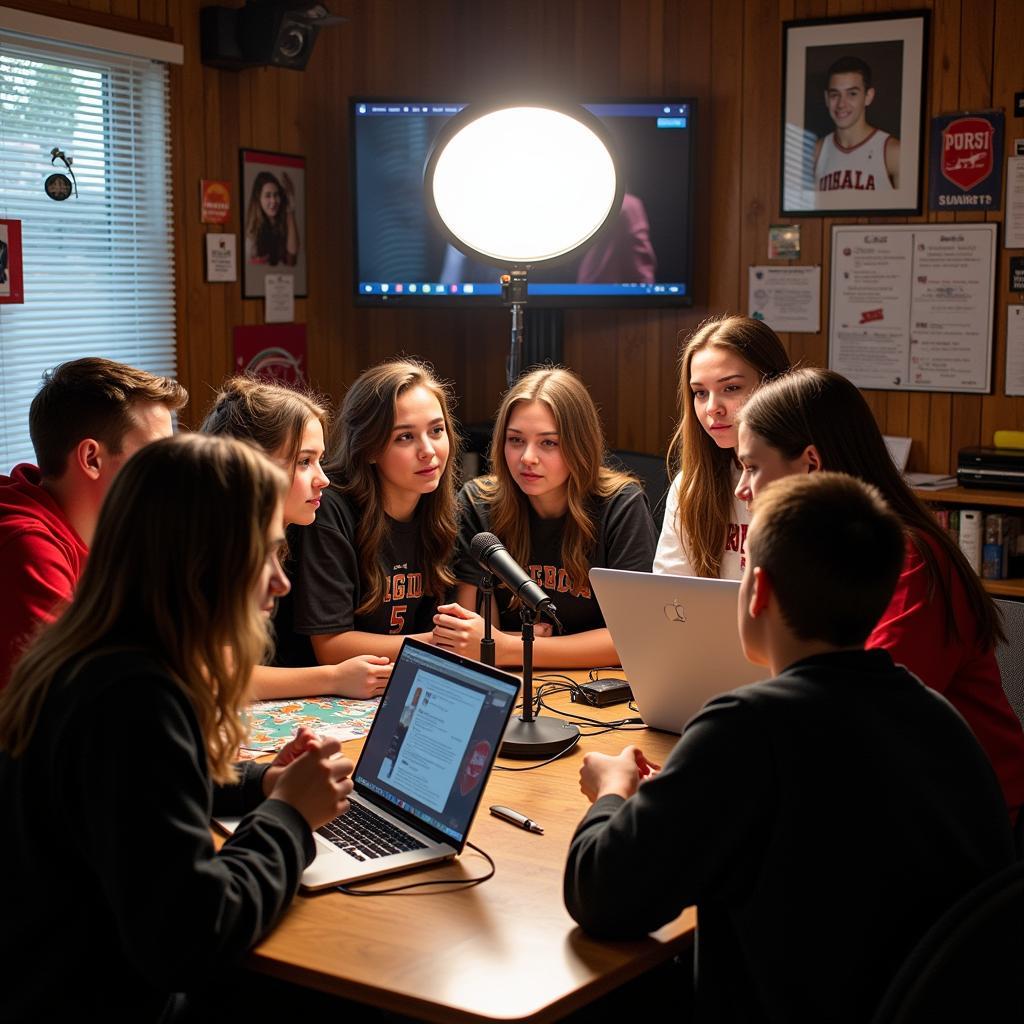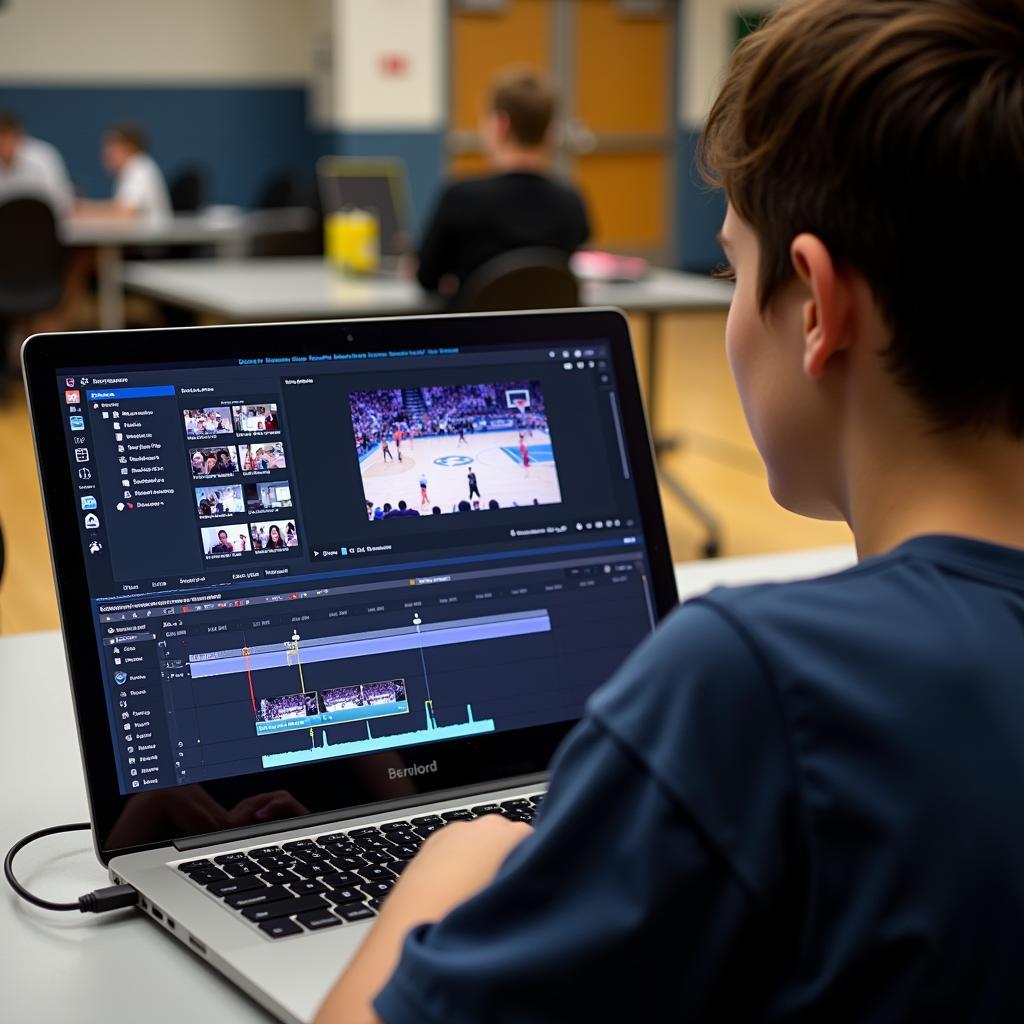Fan TV, the phenomenon of fan-created content dedicated to dissecting and discussing their favorite sports teams and players, has taken the world by storm. What began with passionate supporters congregating in living rooms and pubs has evolved into a digital phenomenon, with online platforms buzzing with fan-generated analysis, commentary, and banter. Now, this trend is infiltrating a new frontier: schools.
 Students recording a fan tv segment in a school studio
Students recording a fan tv segment in a school studio
From Sidelines to Smartphones: How Schools are Embracing Fan TV
The rise of Fan TV in schools is fueled by several factors. Firstly, the accessibility of technology plays a key role. Smartphones equipped with high-quality cameras and user-friendly editing software empower students to become content creators with minimal resources. This ease of production has democratized the world of sports media, allowing young fans to share their perspectives and insights.
 Student editing a fan tv video on their laptop
Student editing a fan tv video on their laptop
Secondly, the participatory nature of Fan TV resonates deeply with the digital native generation. Growing up in the age of social media, these students are accustomed to engaging with content actively, sharing their opinions, and participating in online communities. Fan TV provides an outlet for their passion for sports while fostering critical thinking, communication, and digital literacy skills.
More Than Just Games: The Educational Benefits of Fan TV
While some may dismiss Fan TV as mere fandom, educators and experts are recognizing its potential educational value. Creating Fan TV content requires a deep understanding of the sport itself, including its rules, strategies, and history. Students involved in these projects often find themselves researching teams, players, and past games, fostering a deeper appreciation for the nuances of the sport.
Moreover, Fan TV promotes collaboration and communication skills. Students must work together to brainstorm ideas, plan segments, film and edit videos, and promote their content. This collaborative process mirrors real-world media production and equips students with valuable teamwork and communication skills.
 Students brainstorming ideas for their next Fan TV episode
Students brainstorming ideas for their next Fan TV episode
The Future of Fandom: Fan TV as a Bridge to Opportunity
As Fan TV continues to gain traction in schools, it holds the potential to open doors to future opportunities for students. The skills acquired through creating and producing Fan TV content are transferable to a variety of fields, including journalism, broadcasting, digital marketing, and content creation. Some schools are even beginning to offer extracurricular programs or clubs dedicated to sports media production, recognizing the growing demand for these skillsets in the job market.
Conclusion
The emergence of Fan TV in schools reflects a broader shift in the media landscape, where fan-generated content is gaining increasing influence and recognition. By embracing this trend, educators can leverage students’ passion for sports to foster critical thinking, digital literacy, and collaboration, while equipping them with skills that translate far beyond the realm of fandom. As Fan TV continues to evolve, its potential to shape the future of sports media and empower young voices remains undeniable.


